67 Lepidoptera Families II
Nymphalidae
Nymphalidae is the largest family of butterflies, with over 6000 species described. They are also called the brush-footed butterflies, and the family includes many of the best-known butterfly species. Many are very brightly coloured (the monarch butterfly, Danaus plexippus, is in this family) and their larval and adult habits vary widely. The front legs on many of these butterflies are reduced and modified into “brushes”, so only two pairs of jointed legs are readily apparent. Again, it is often necessary to look at the patterns on both the tops and bottoms of wings to determine an identification. I have included photos of several members of the family (top and bottom views are paired) and one typical larva.
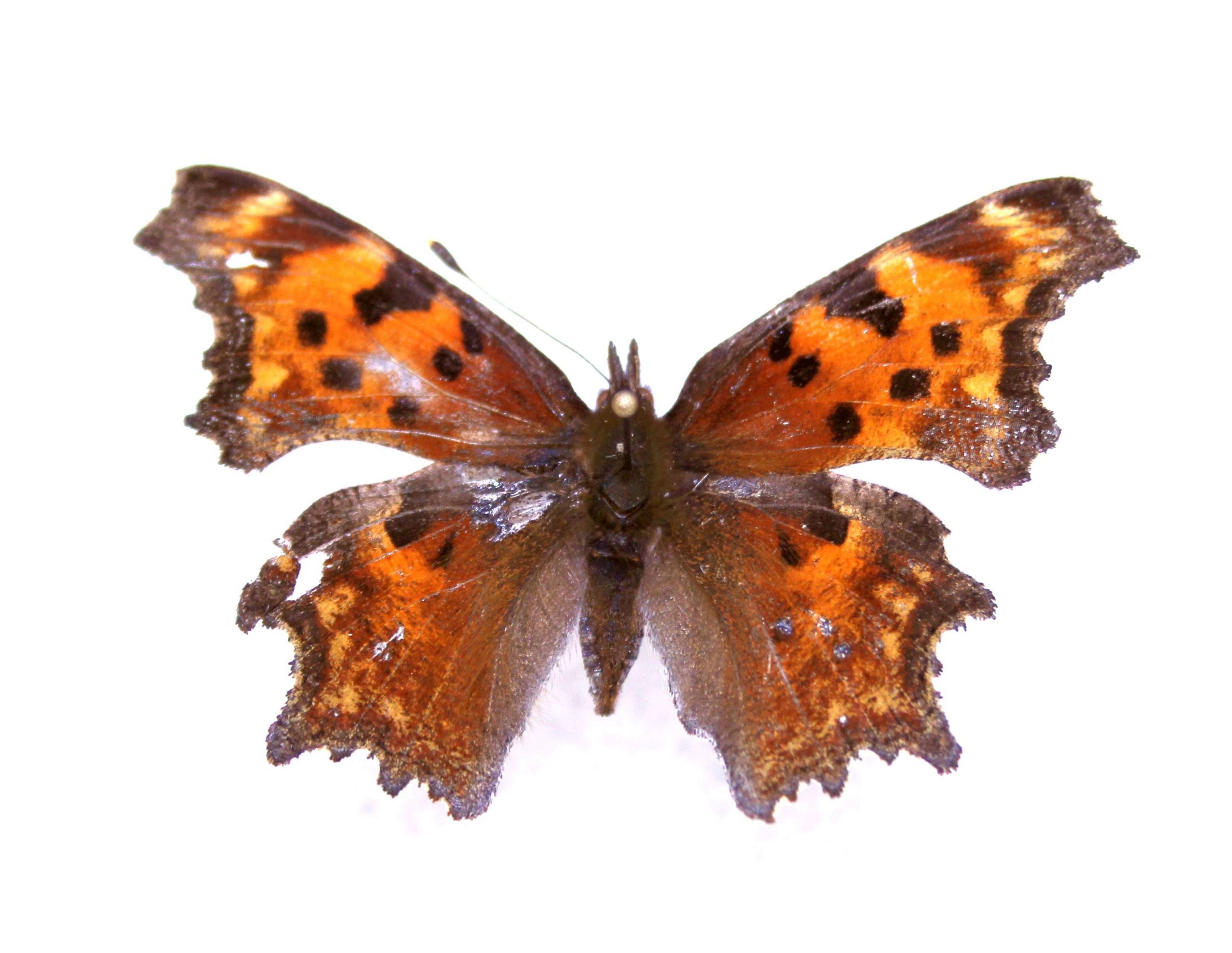
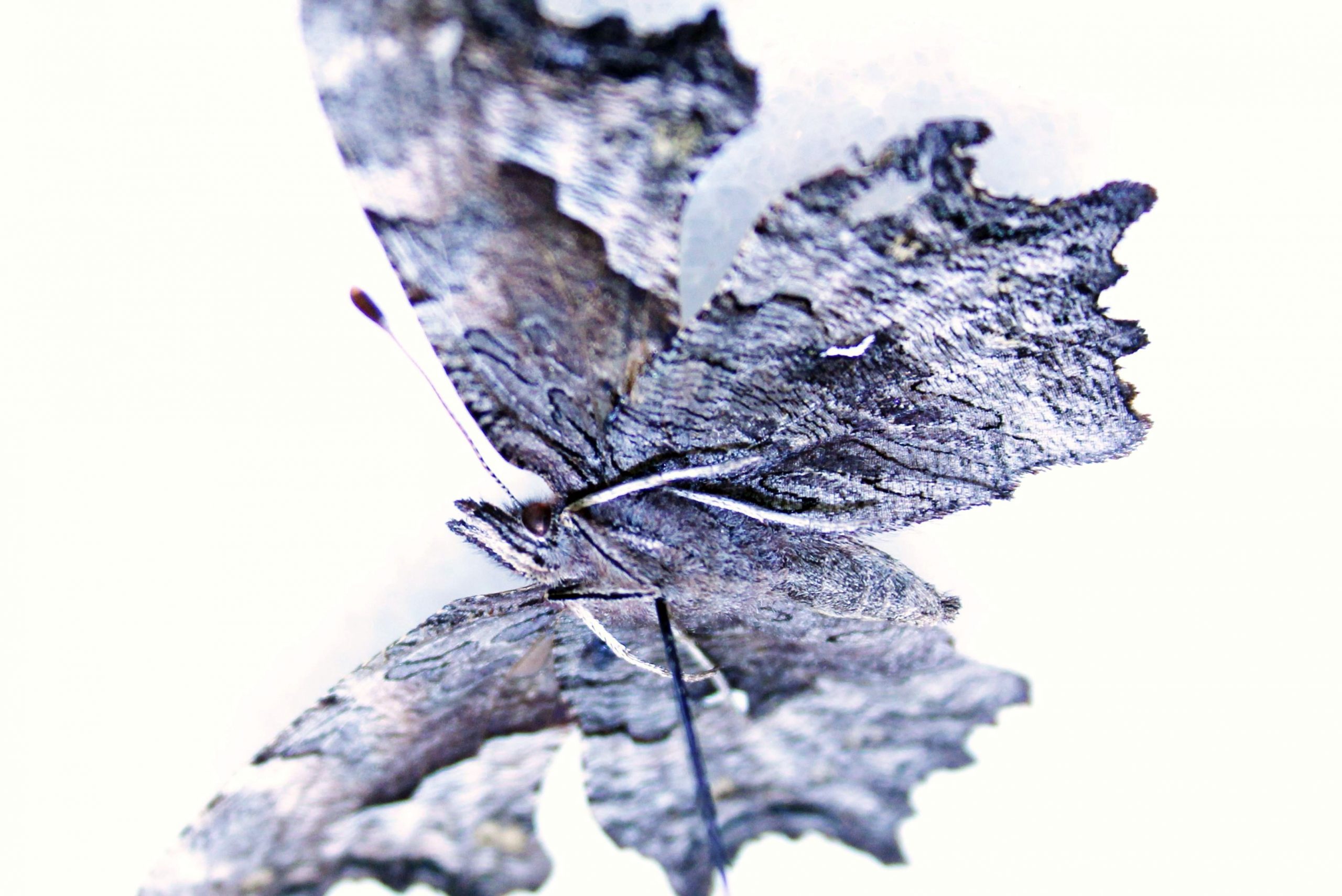
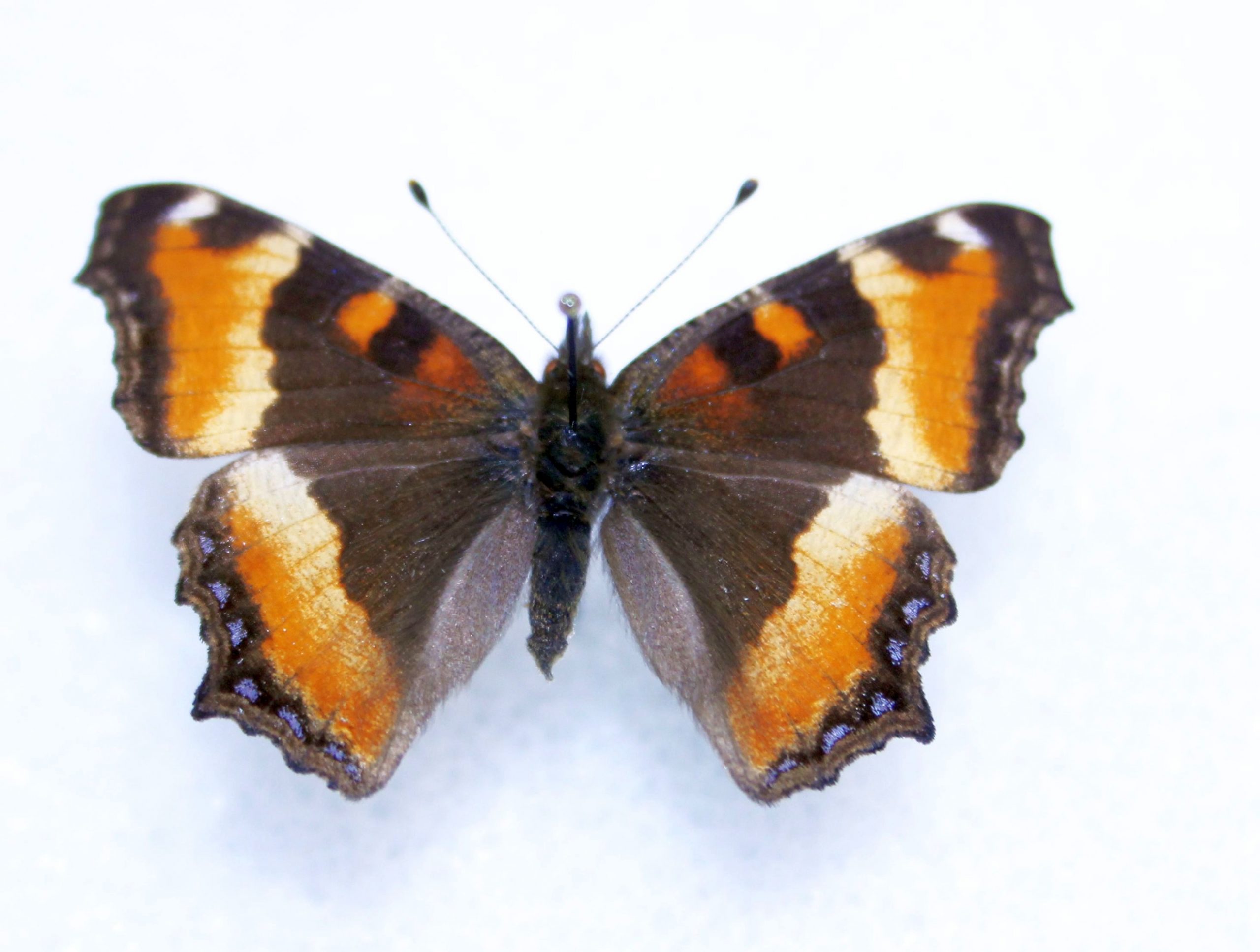
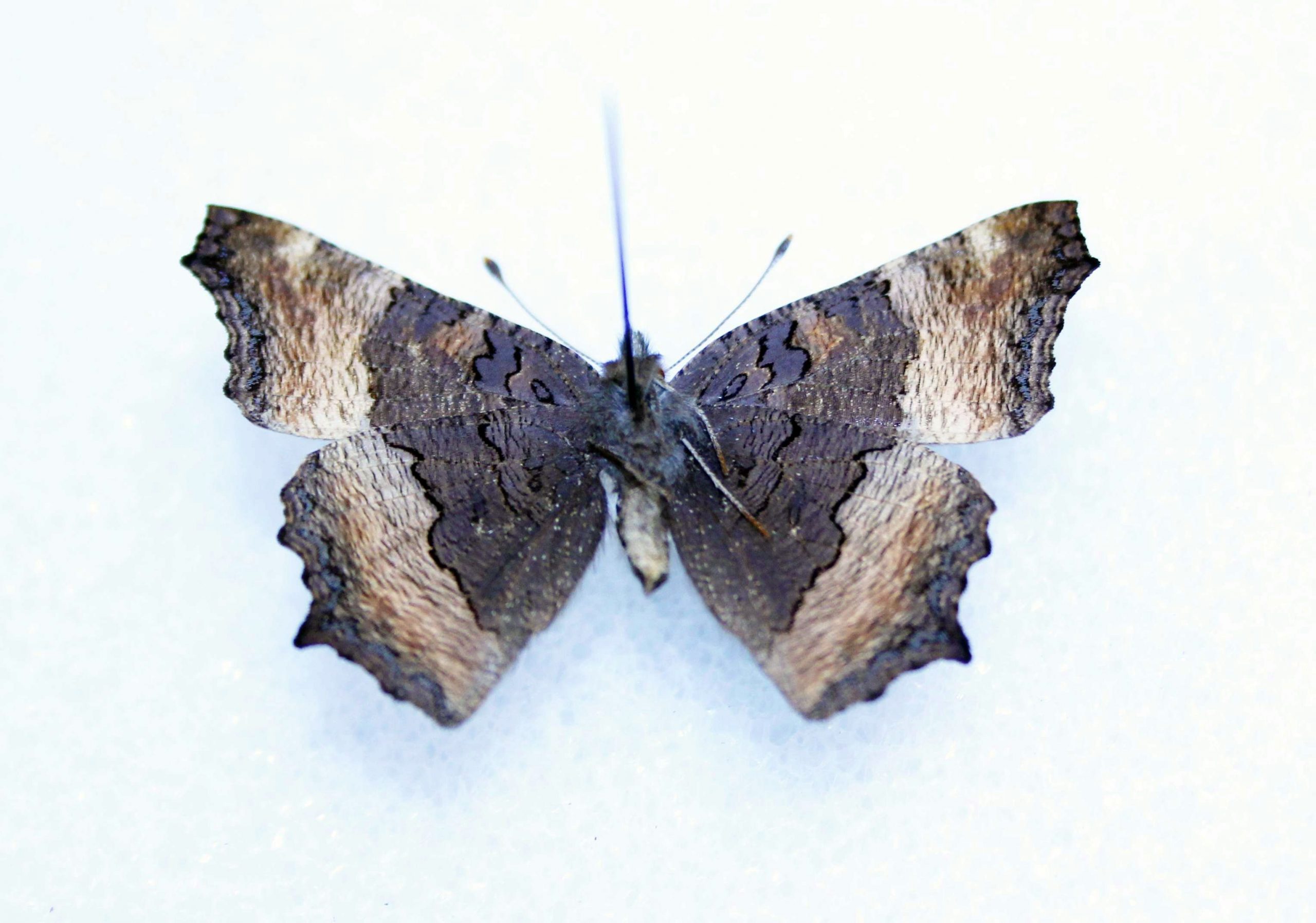
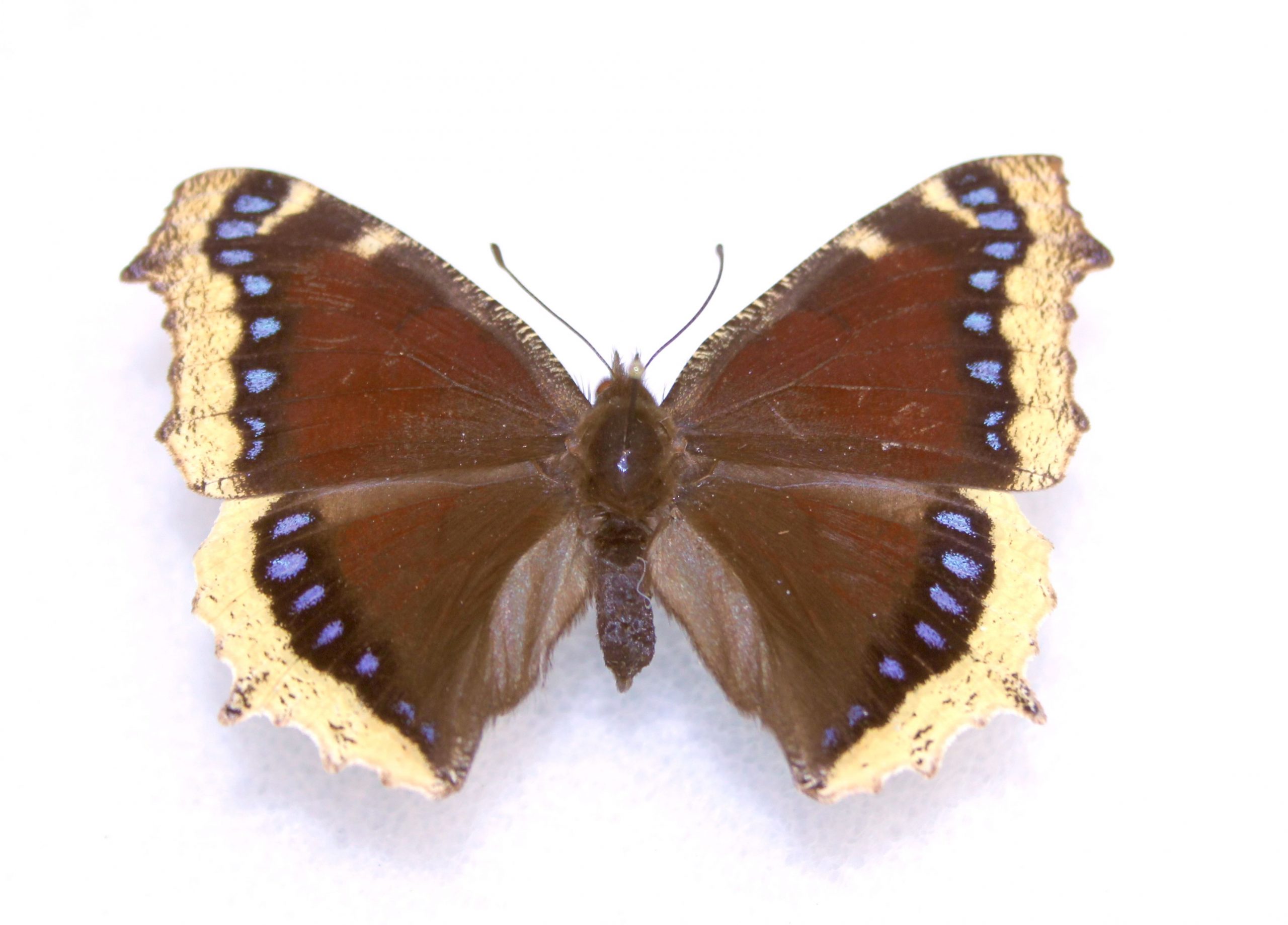
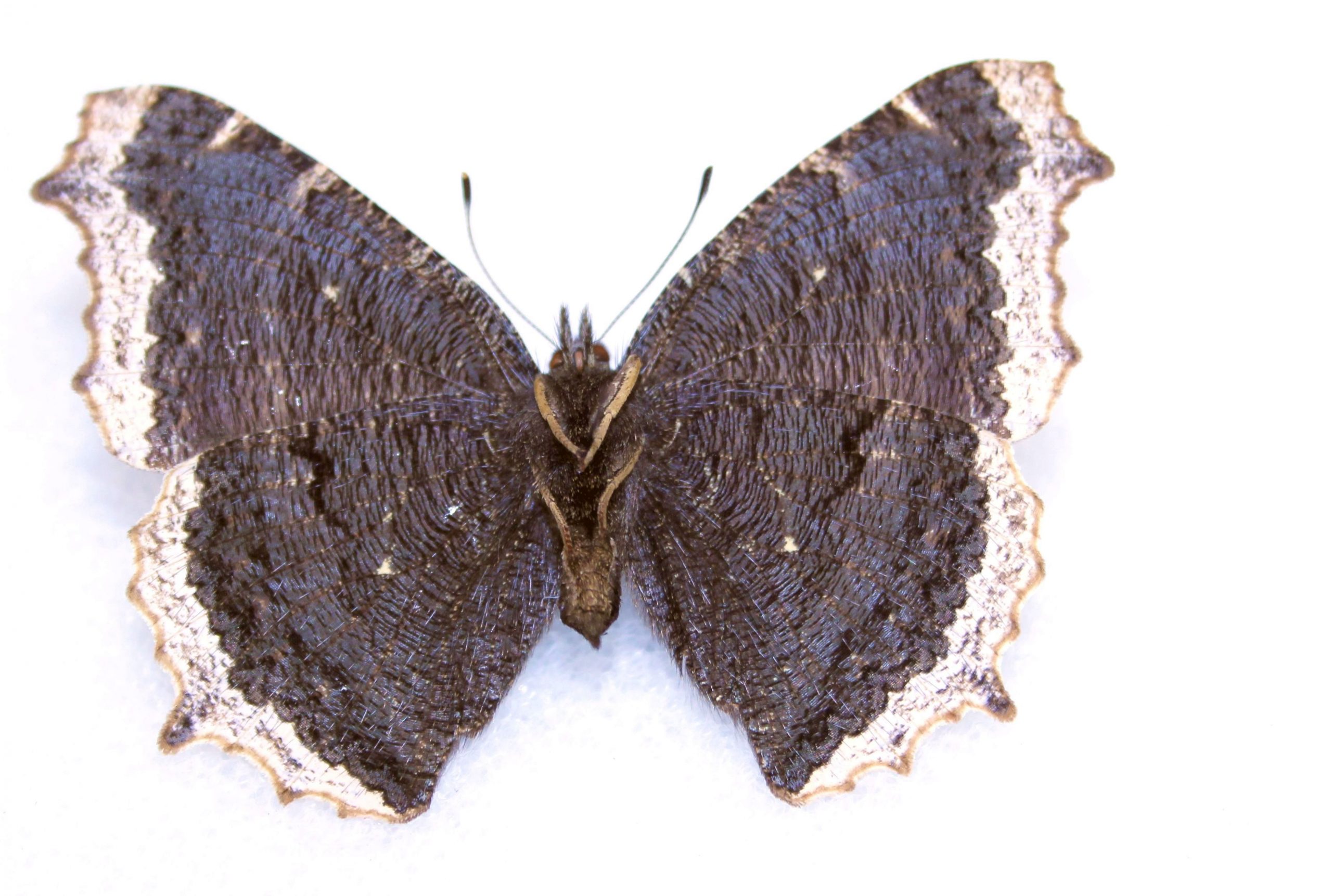
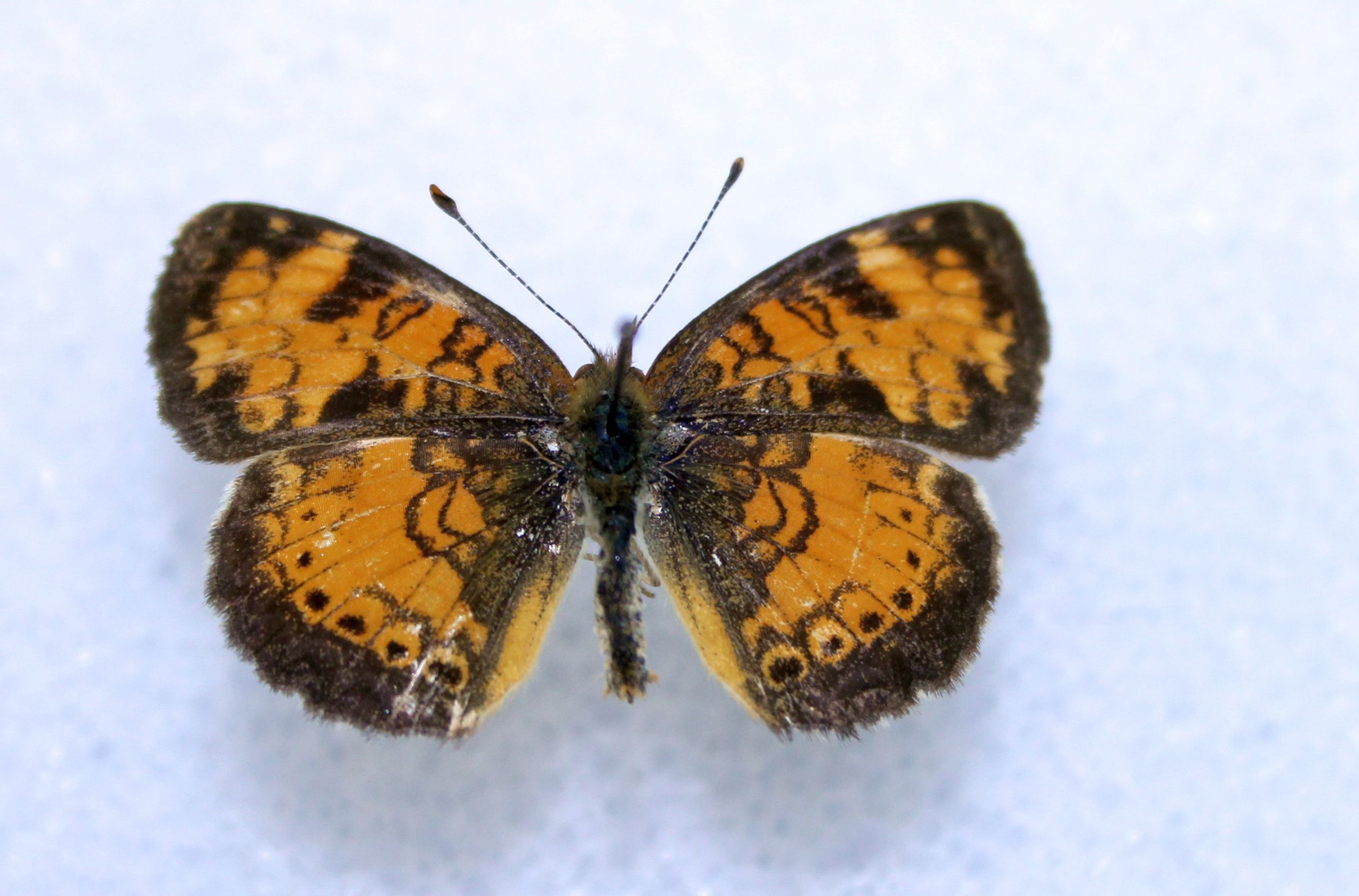
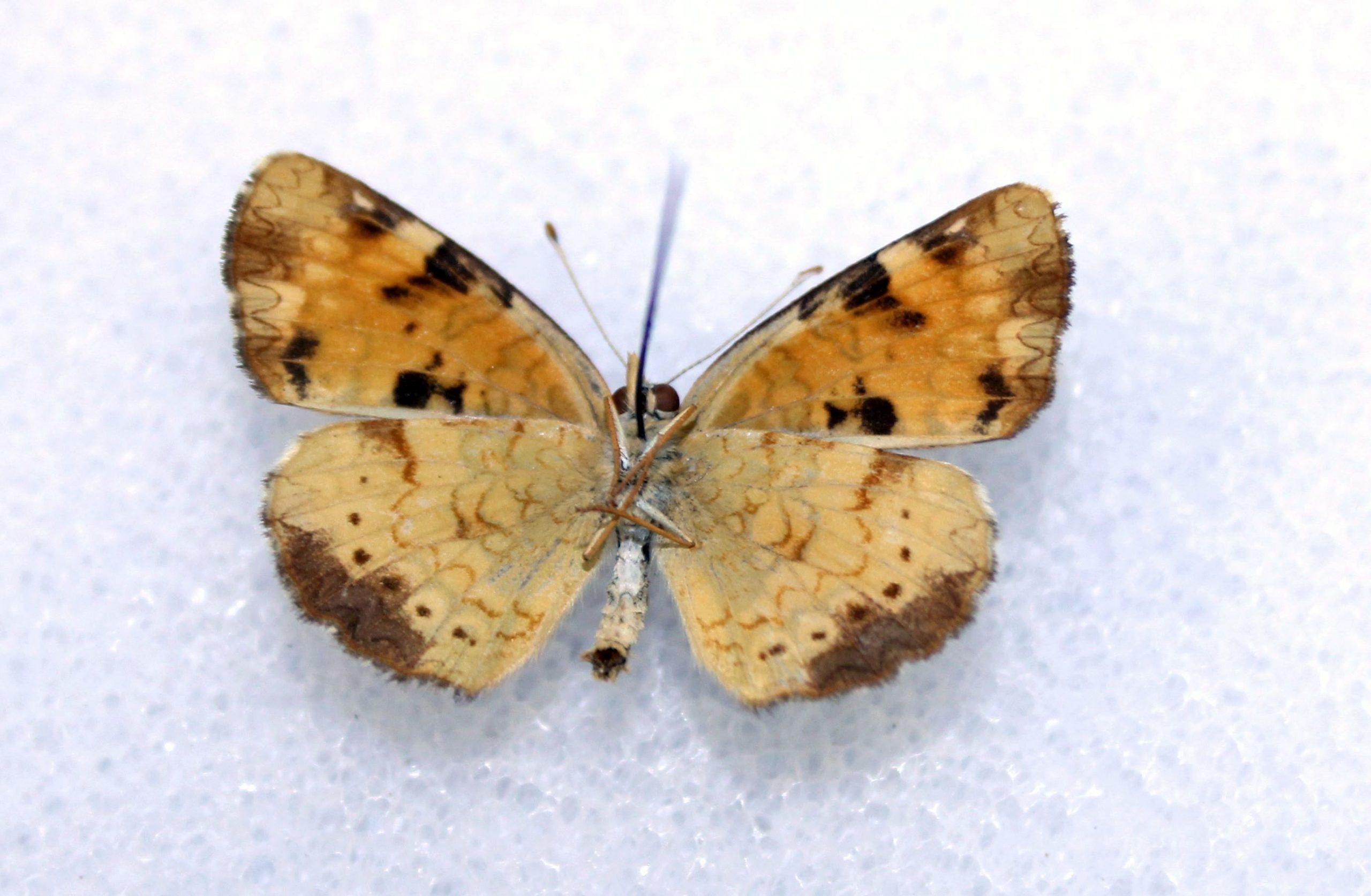
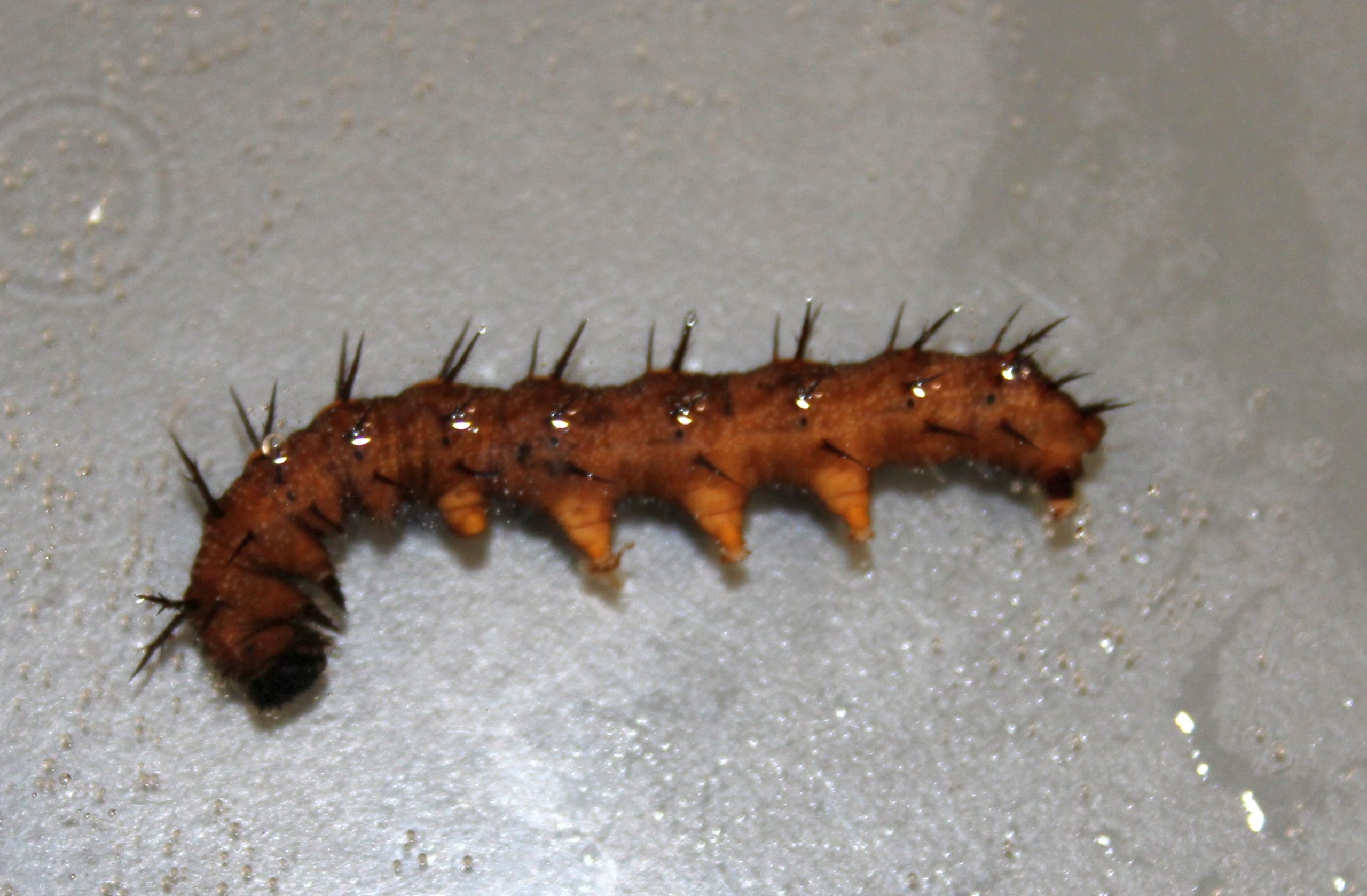
Geometridae
Geometridae is a large moth family, commonly called loopers or inchworms. The larvae do not have the usual five or six pairs of prolegs along the body. Instead, they have only two pairs at the end of the abdomen. As a result, they move in a characteristic “looping” or “inching” way. Adults usually have triangular forewings and fan-shaped hindwings, and there are often wavy lines on the wings parallel to the edges. There is considerable variation in wing shape and pattern in this family, however, so double-check your identifications carefully. There are several significant pests of agriculture and forestry in this family, including the winter moth (Operophtera brumata; a species introduced to BC that defoliates fruit trees and Garry oak), and the western hemlock looper (Lambdina fiscellaria lugubrosa, a native defoliator of many conifers in hemlock-dominated ecosystems).
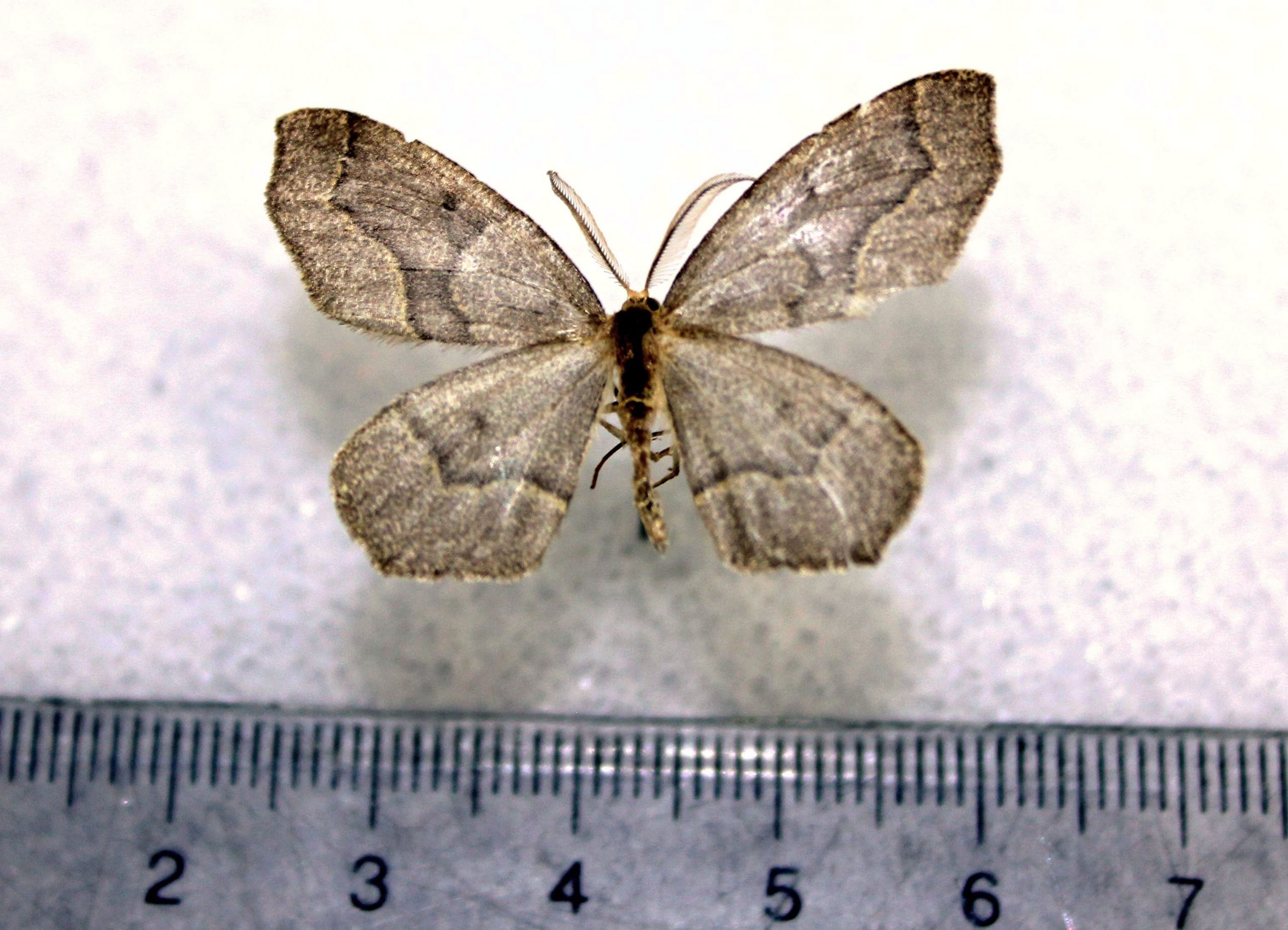
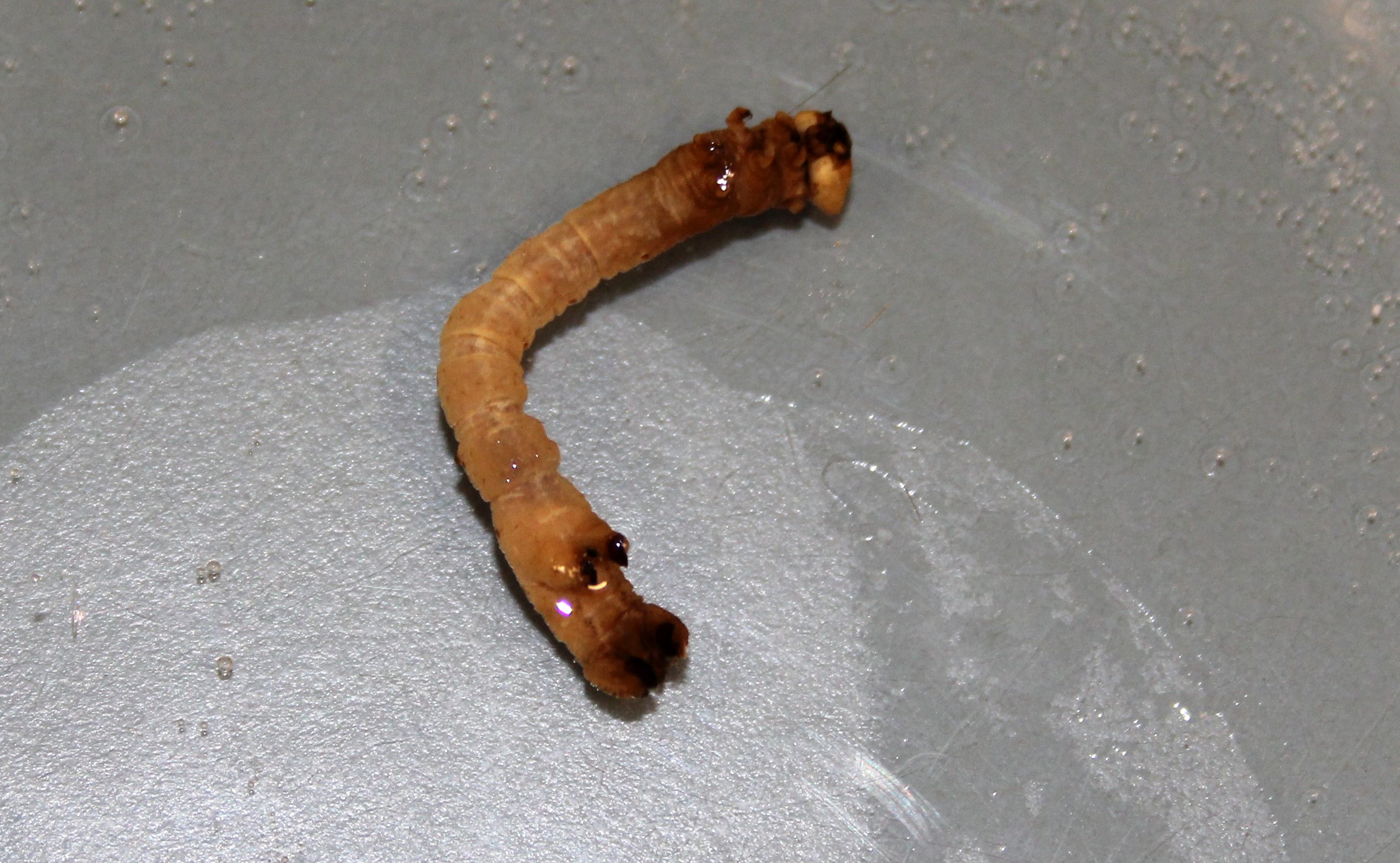
Lasiocampidae
Lasiocampidae, the tent caterpillars and lappet moths, are common defoliators across northern temperate forests. Adults are usually brown moths with stout, hairy bodies. They do not feed. Larvae are often colourful, longitudinally striped in various patterns, and hairy. The larvae are gregarious, and some species build communal webs (“tents”) in host trees. Prince George experiences periodic outbreaks of forest tent caterpillar, Malacosoma disstria, a gregarious species that does not construct a tent. The larvae are distinctively blue, with white, keyhole-shaped markings along the dorsal midline.
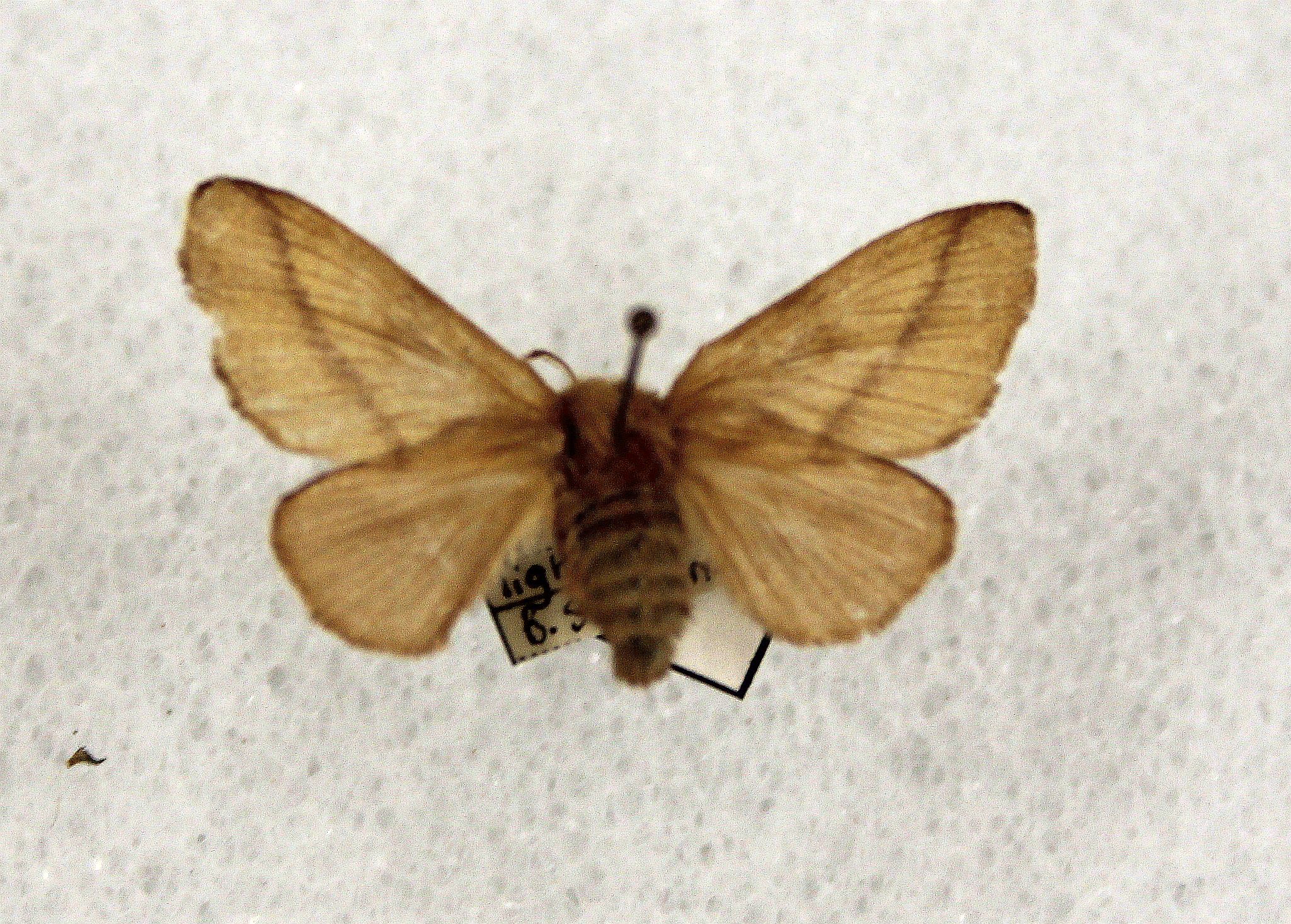
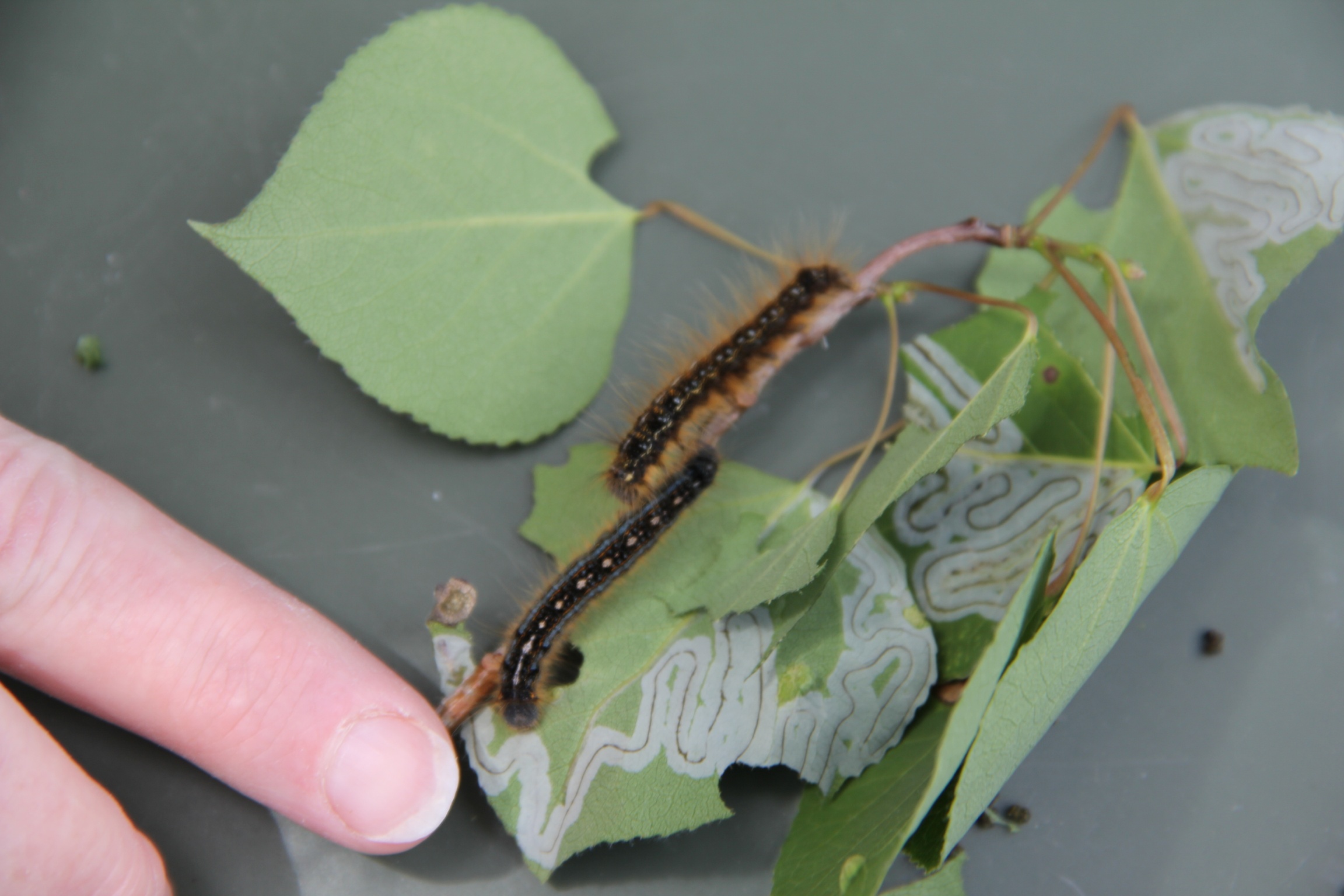
Bombycidae
We do not have a specimen of Bombycidae in the UNBC collection. This is, however, a family you should be aware of – it has had a substantial influence on human history! The best-known representative is Bombyx mori, the silkworm. It is originally from Asia, and has been entirely and widely domesticated for silk production. The larvae feed exclusively on mulberry leaves.
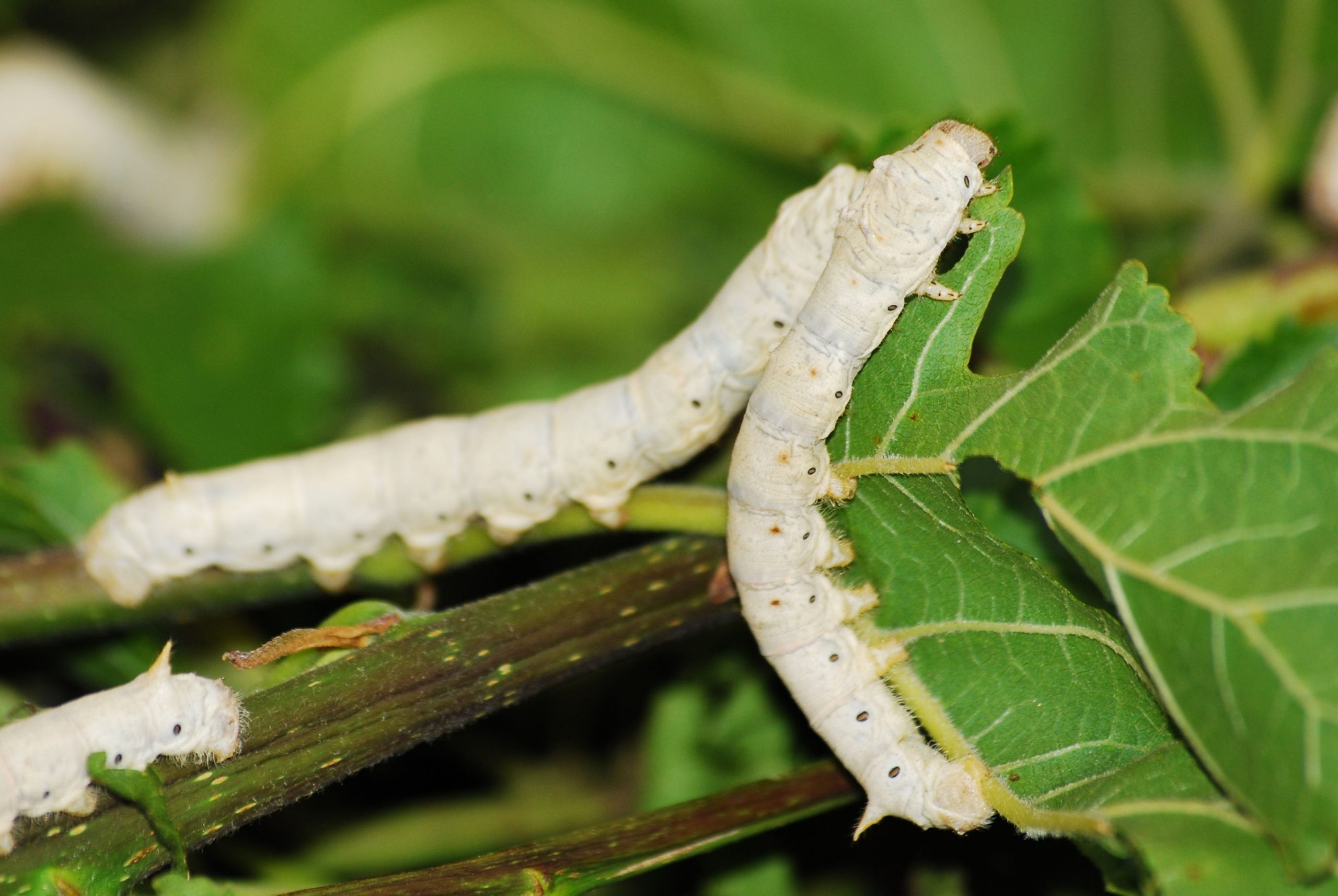
Lilly M real name Małgorzata Miłaszewska, CC BY-SA 3.0 <https://creativecommons.org/licenses/by-sa/3.0>, via Wikimedia Commons
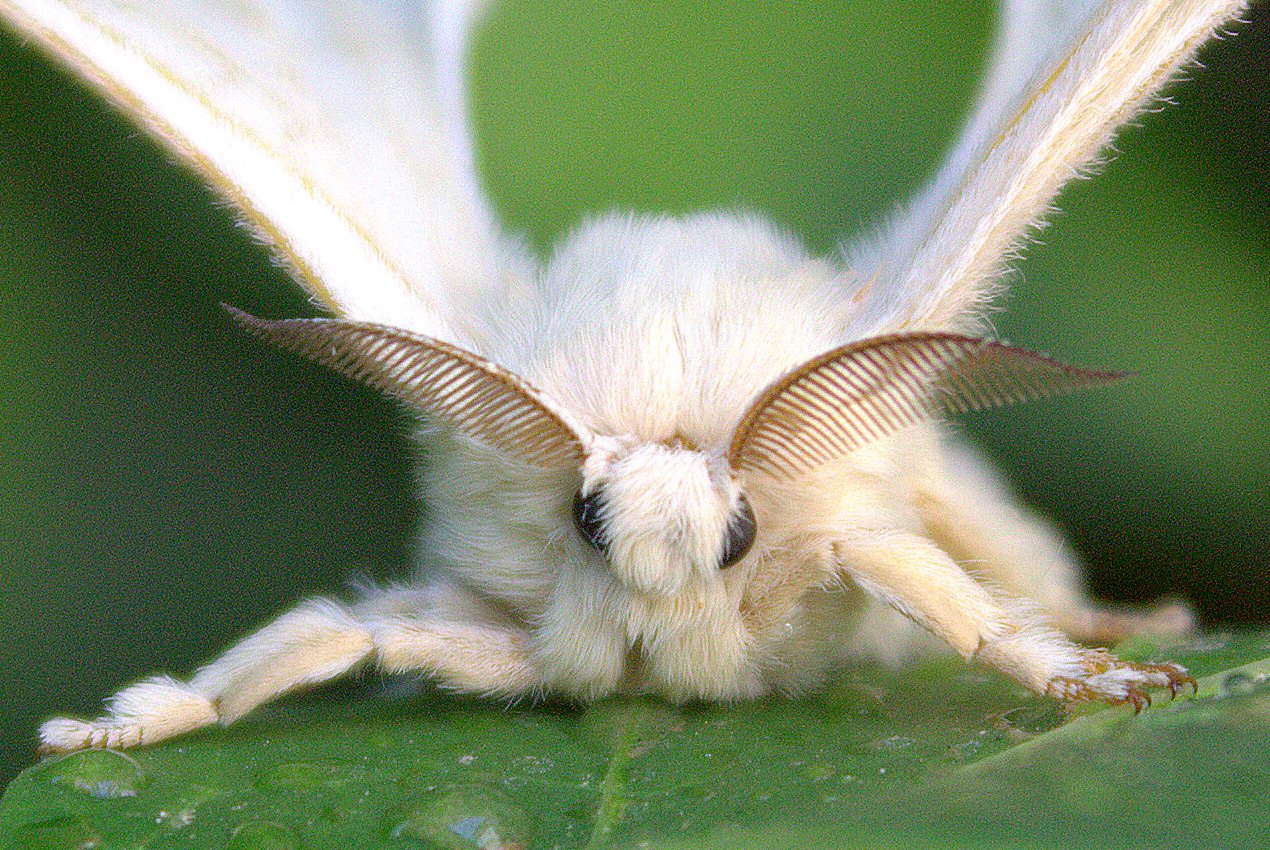
Bombyx_mori1.jpg: Zivya derivative work: Linksfuss, CC BY-SA 3.0 <https://creativecommons.org/licenses/by-sa/3.0>, via Wikimedia Commons
Saturniidae
Saturniidae larvae also produce massive quantities of silk for their cocoons, leading to the common name of giant silk moths. Several species are exploited for so-called “wild silk”, but they have not been domesticated like Bombyx mori. Adult Saturniidae are large, showy moths. The larvae are correspondingly large, and a few species are used as protein-rich food in some cultures. The species pictured here, Hyalophora columbia, was found on our property in Prince George as larvae feeding on Canada buffaloberry.
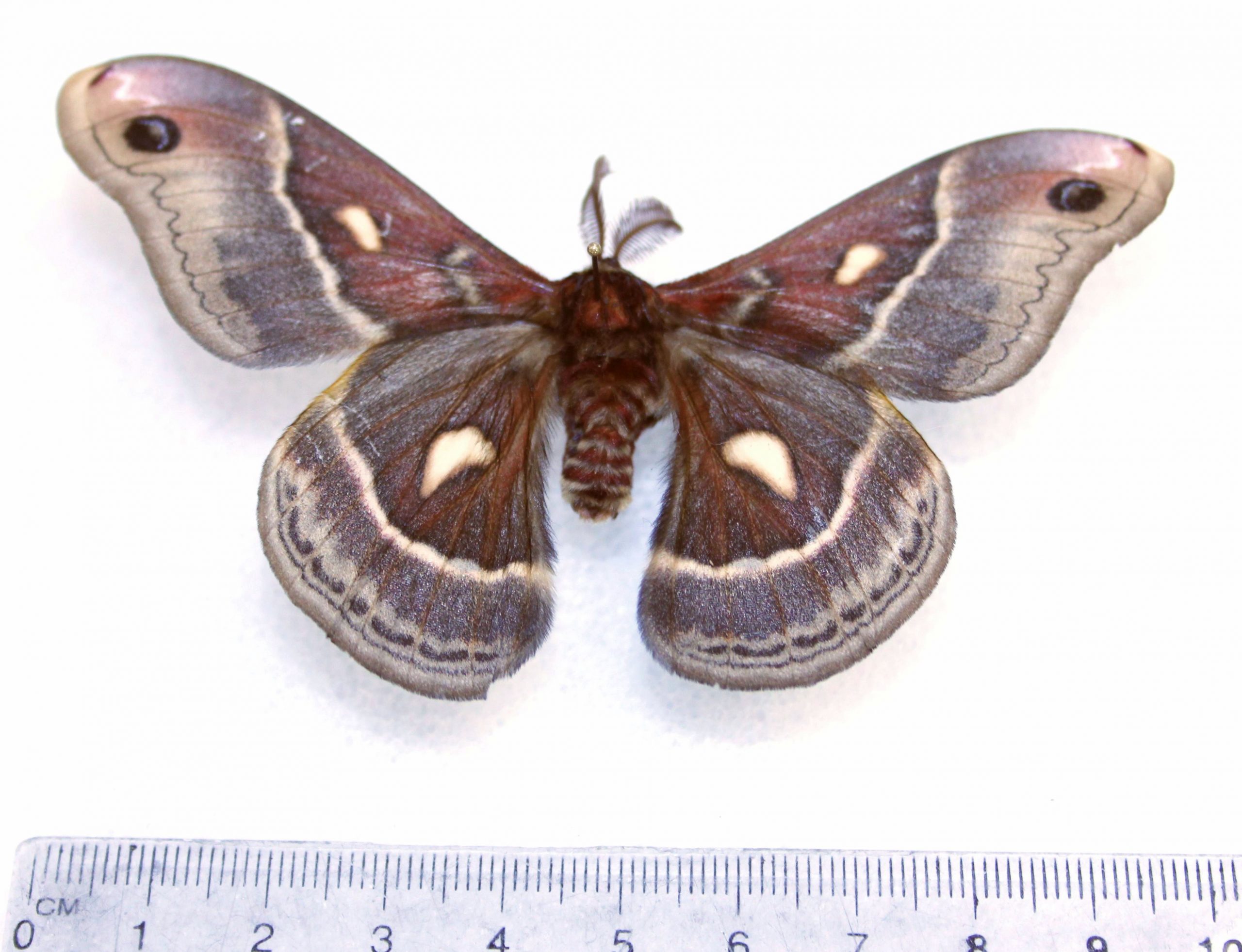
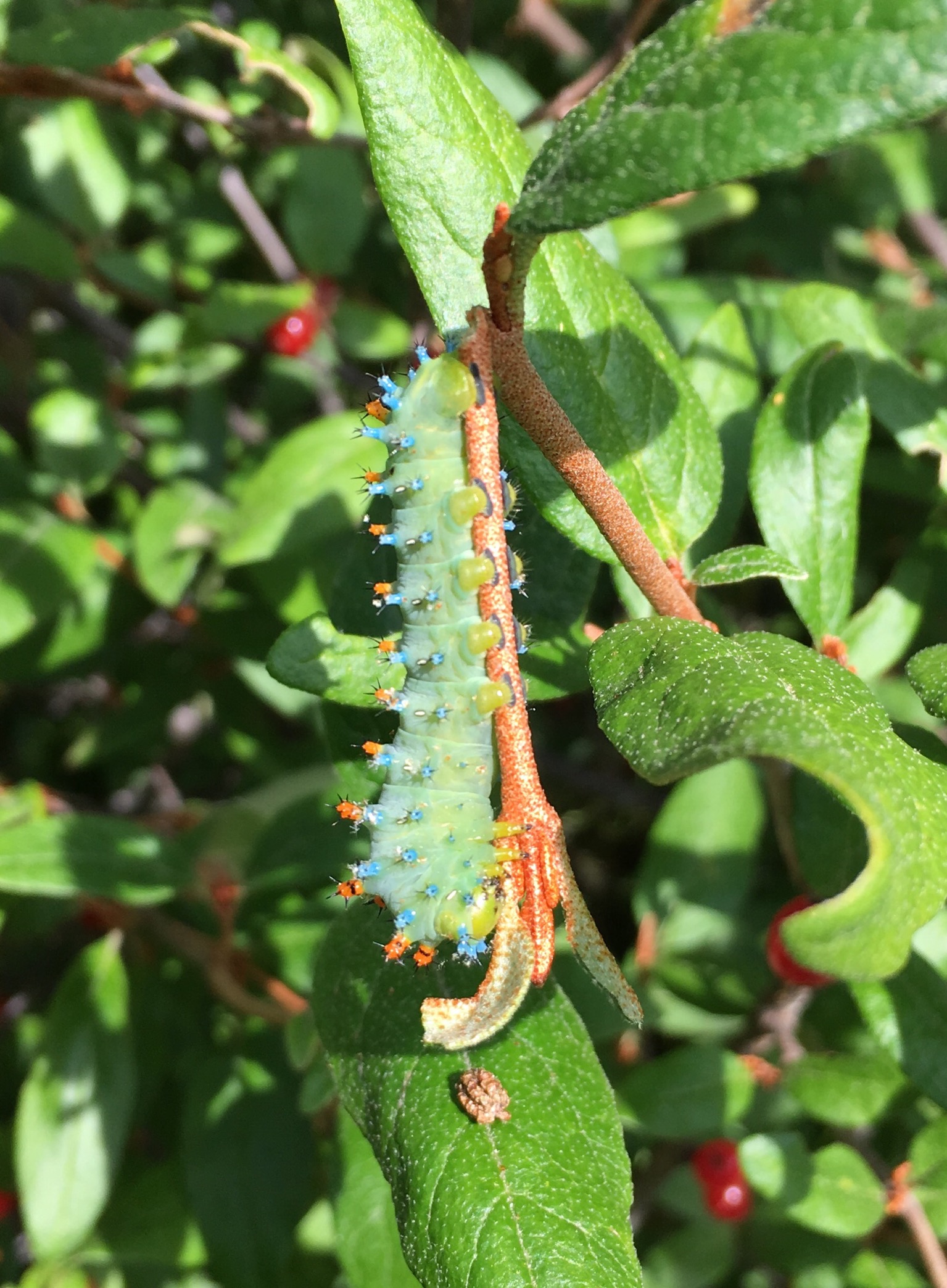
Sphingidae
Sphingidae, the sphinx or hawk moths, is another family of mostly large, showy moths. Some larvae (hornworms) have a “horn” at the tip of the abdomen that can produce noxious chemicals to repel predators. A few species of Sphingidae have clear wings, with the scales restricted to the edges of the wings and the largest veins. The hummingbird clearwing, Hemaris thysbe, is relatively common in Prince George when and where lilacs are flowering. Be sure to compare the overall wing and body shapes between this family and the Saturniidae.
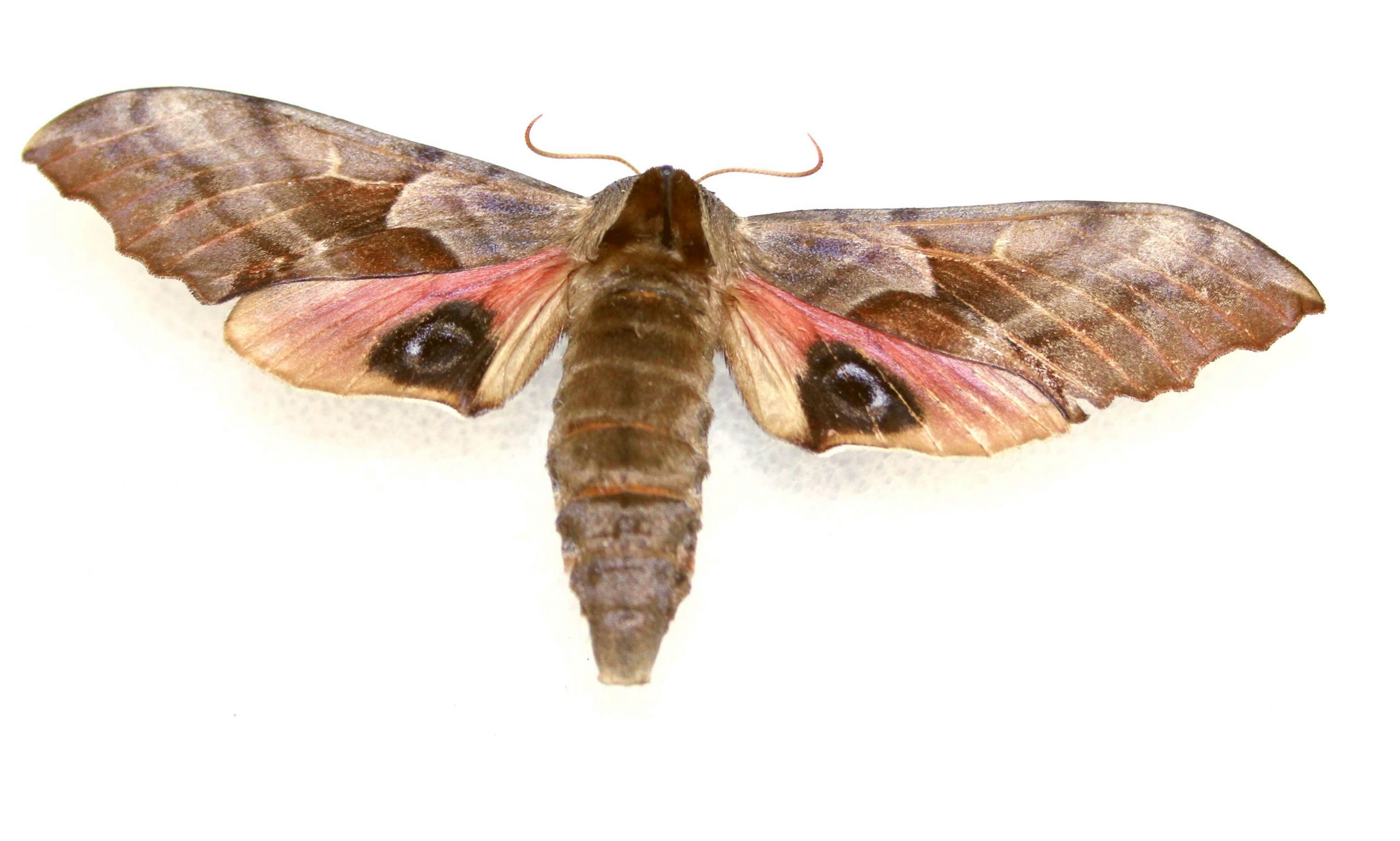
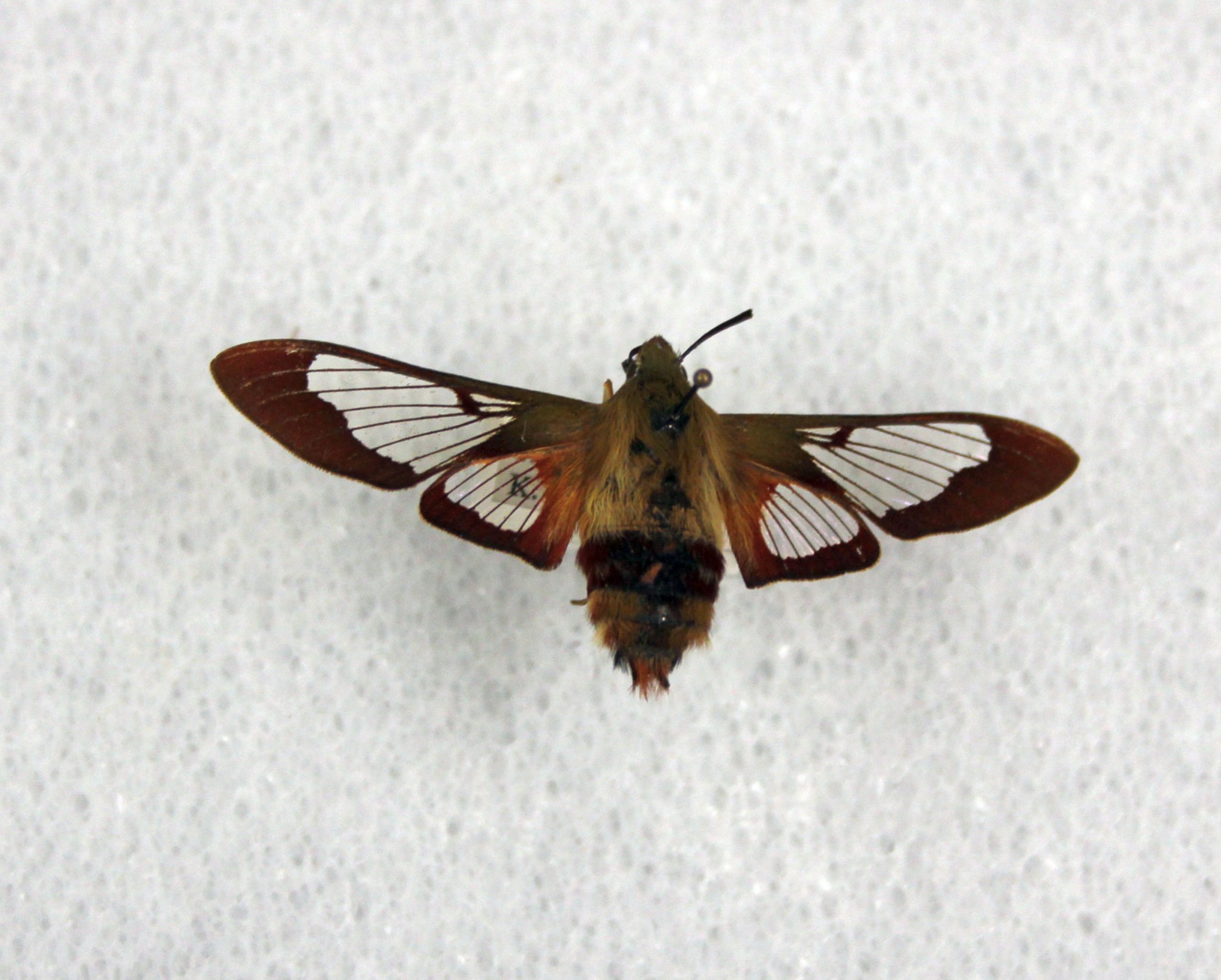
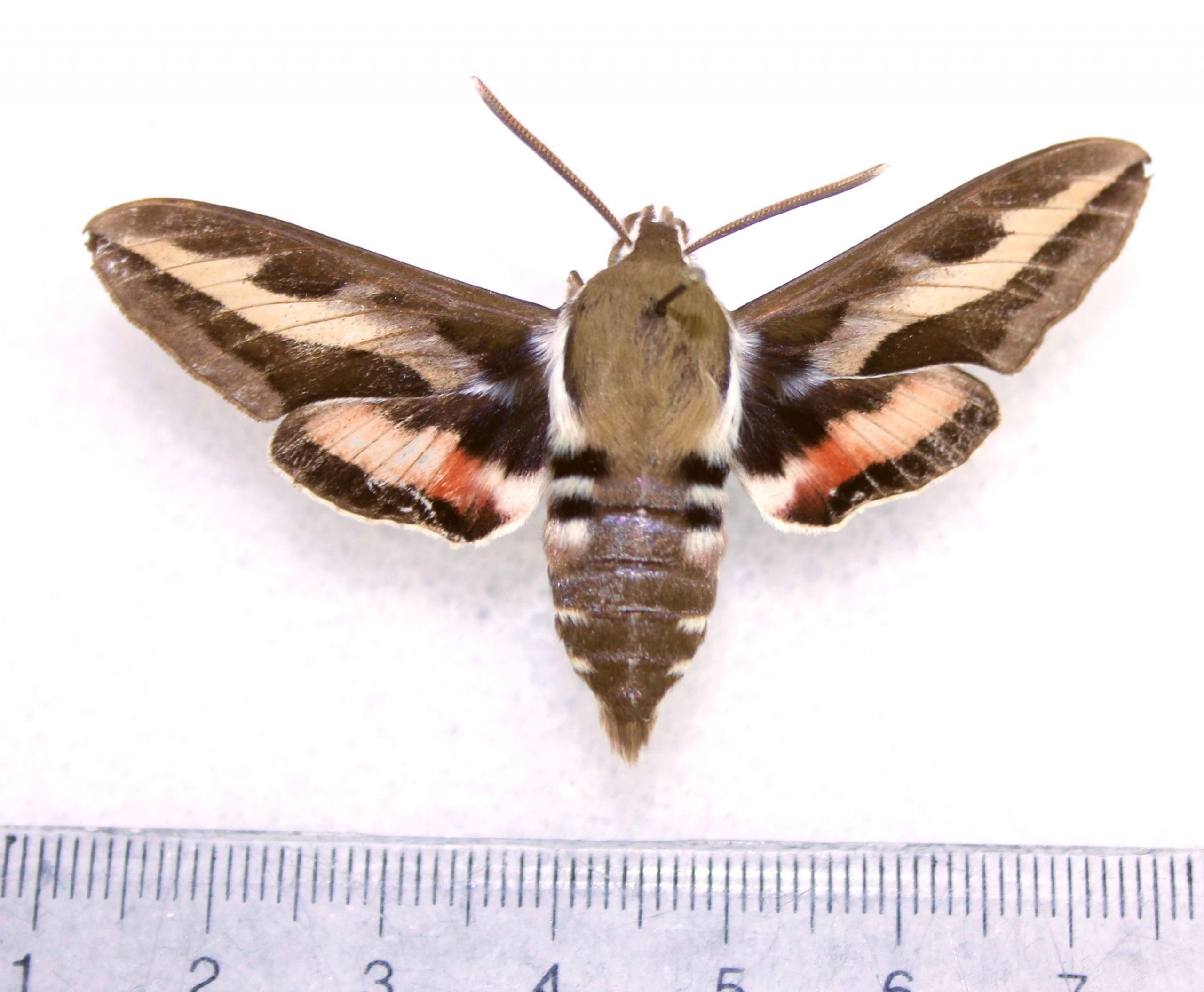
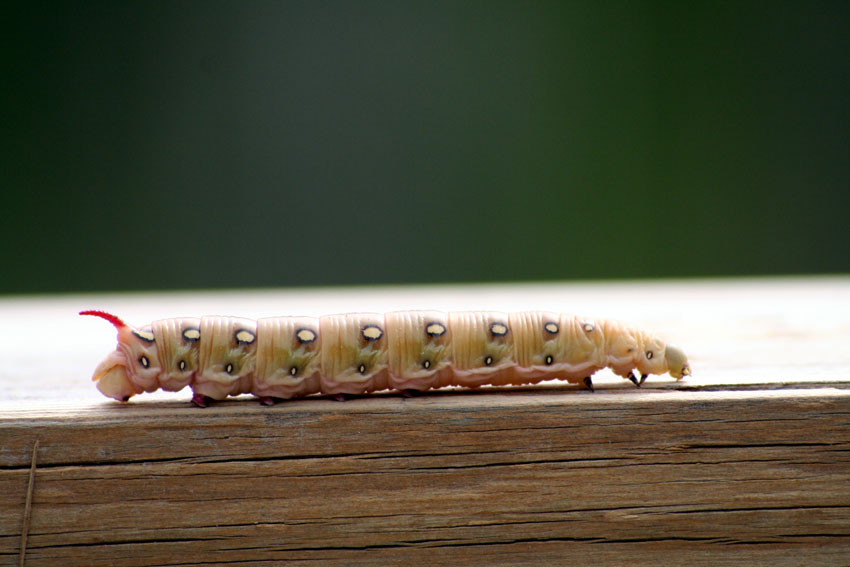
Erebidae
Erebidae is among the largest moth families, and includes the tussock moths, tiger moths, and underwings. There are many important agricultural and forestry pests in this family. The subfamily Lymantriinae, the tussock moths (e.g. Douglas-fir tussock moth, Orgyia pseudotsugata), have urticating hairs as larvae and many have brachypterous adult females. The larval hairs are incorporated into the cocoon, where the larva pupates. When the female emerges, she remains on the cocoon, broadcasting sex pheromone. Once mating is complete, she also deposits her eggs on the cocoon; thus, the hairs serve to protect multiple stages of the insect. Tiger moths are usually very brightly coloured as adults, but are best known by their larvae, like woolly bears, again covered in colourful urticating hairs. Underwings confine the bright colouration to the hind wings, while the front wings resemble tree bark. At rest during the day, the moth is almost invisible, but opens its wings and flashes bright colours if disturbed.
Several species in this family are also important introduced species in North America, including the satin moth (Leucoma salicis; white moth pictured below), which is common in north-central BC on aspen and other poplars, and the spongy moth, Lymantria dispar.
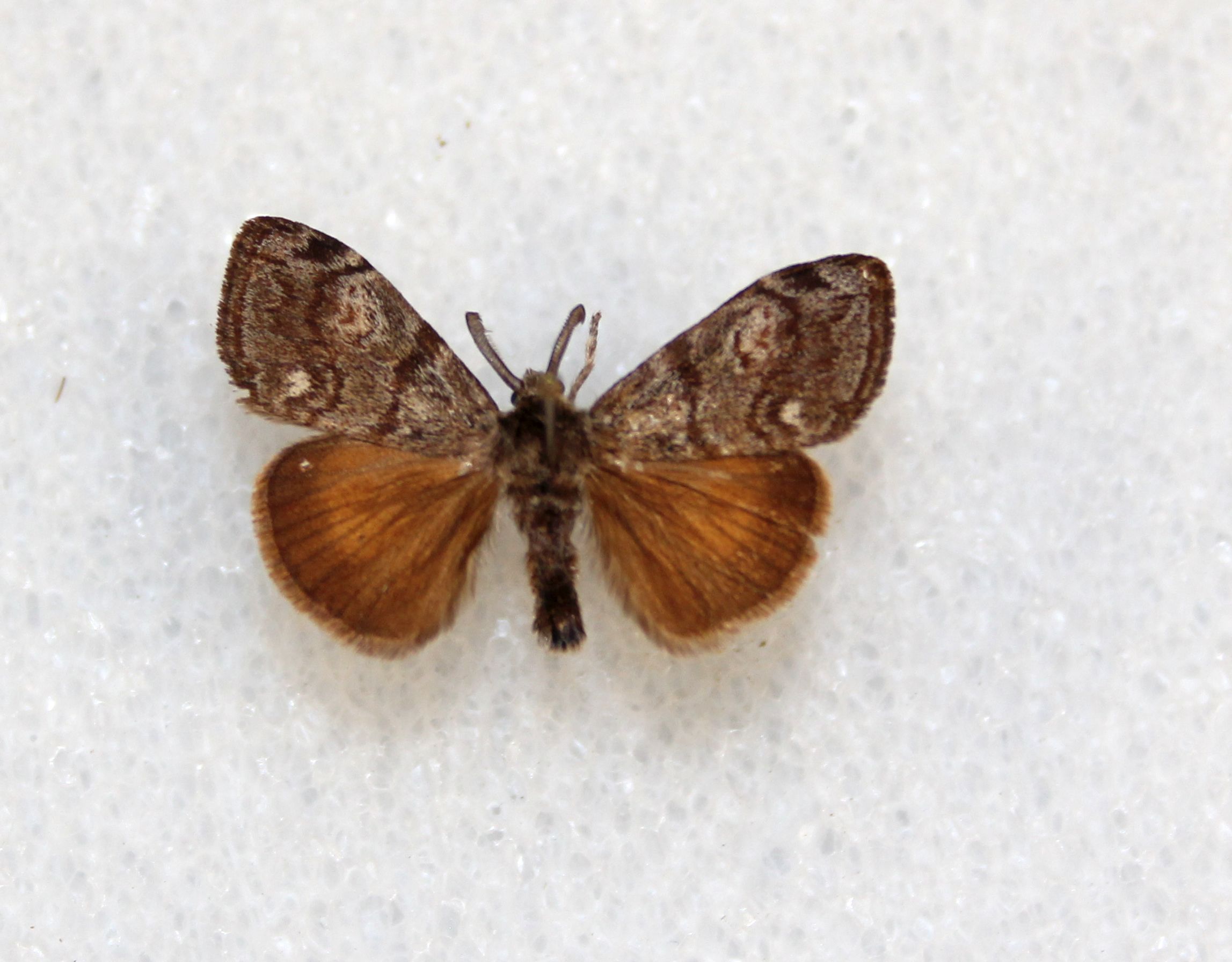
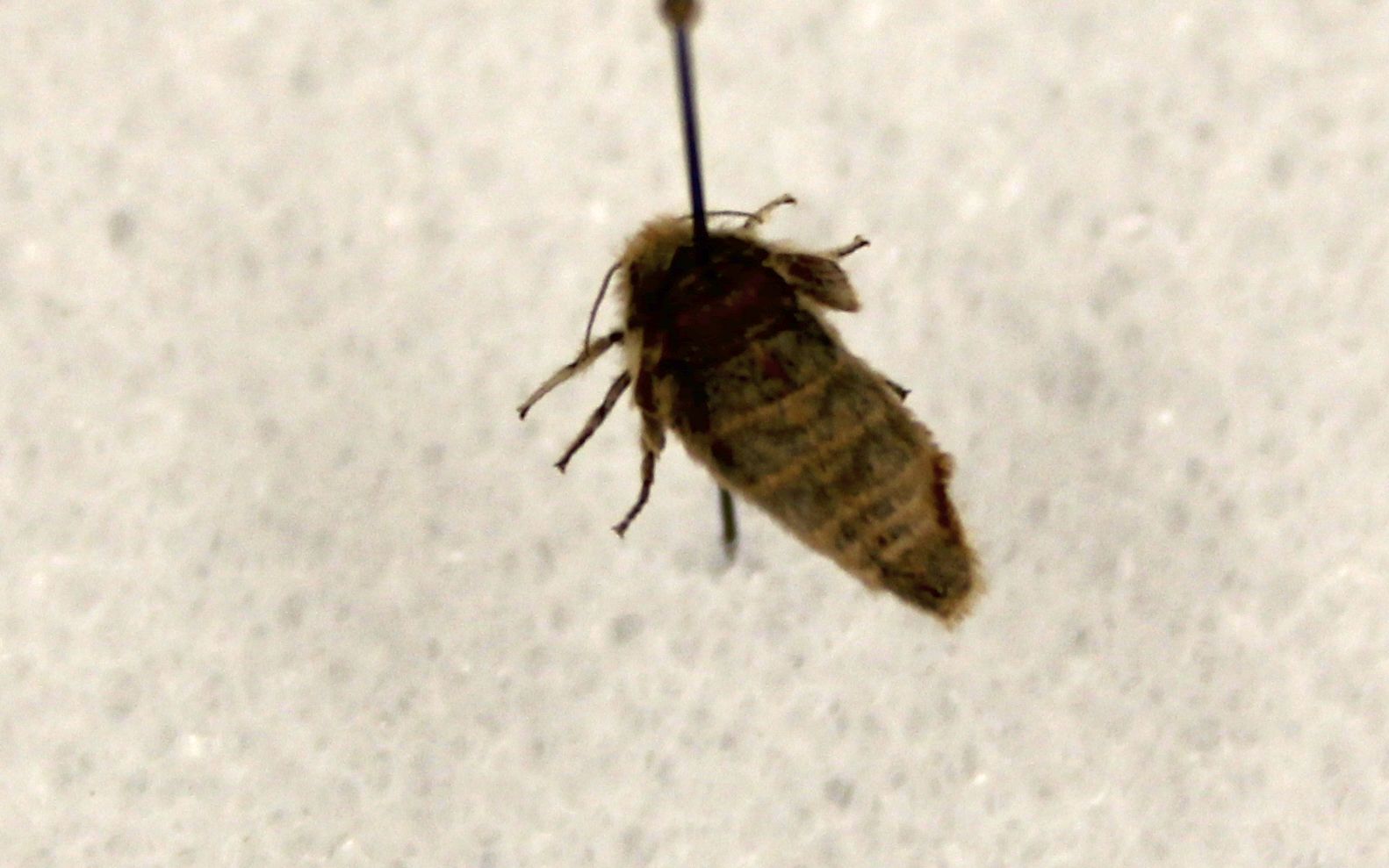
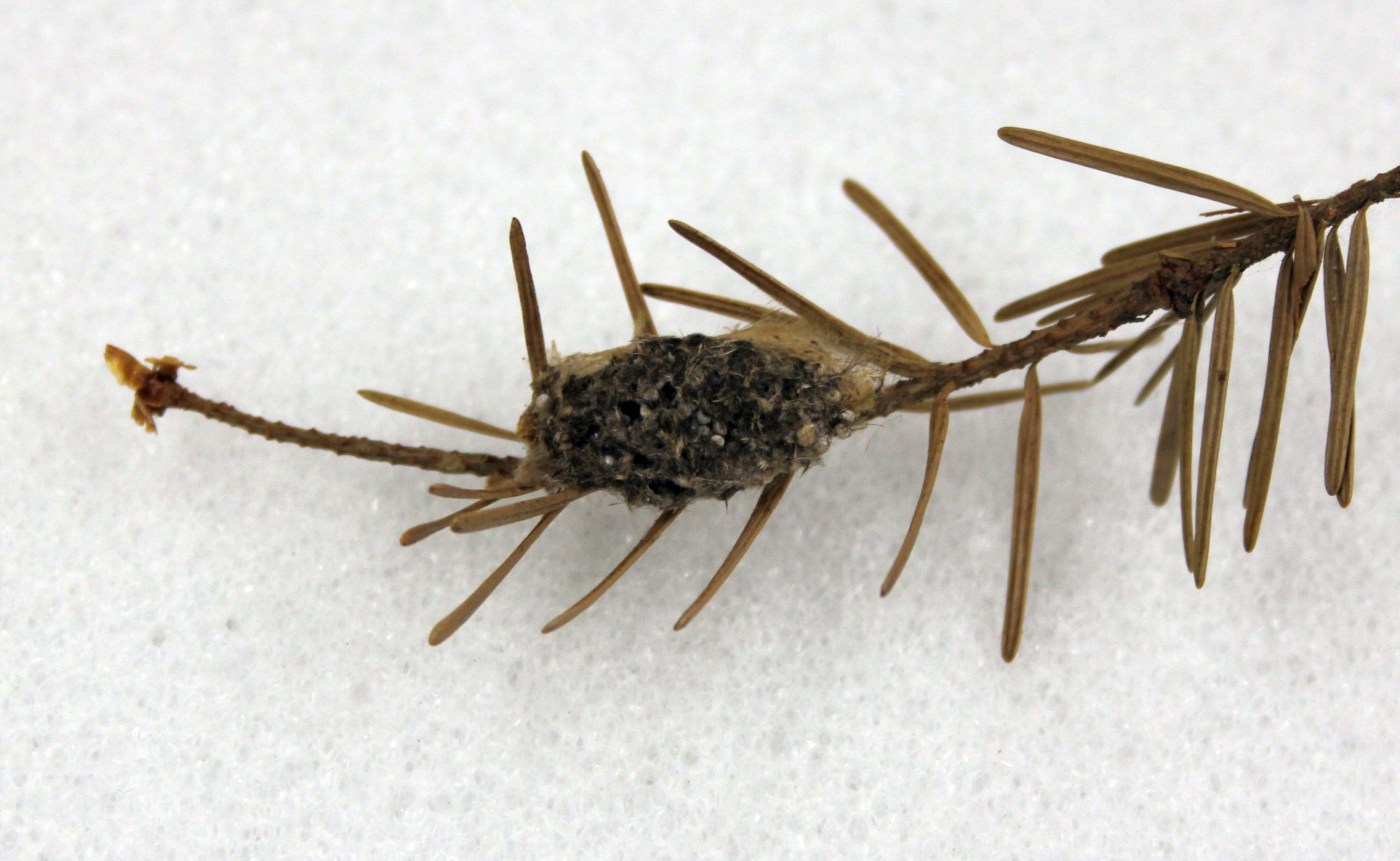
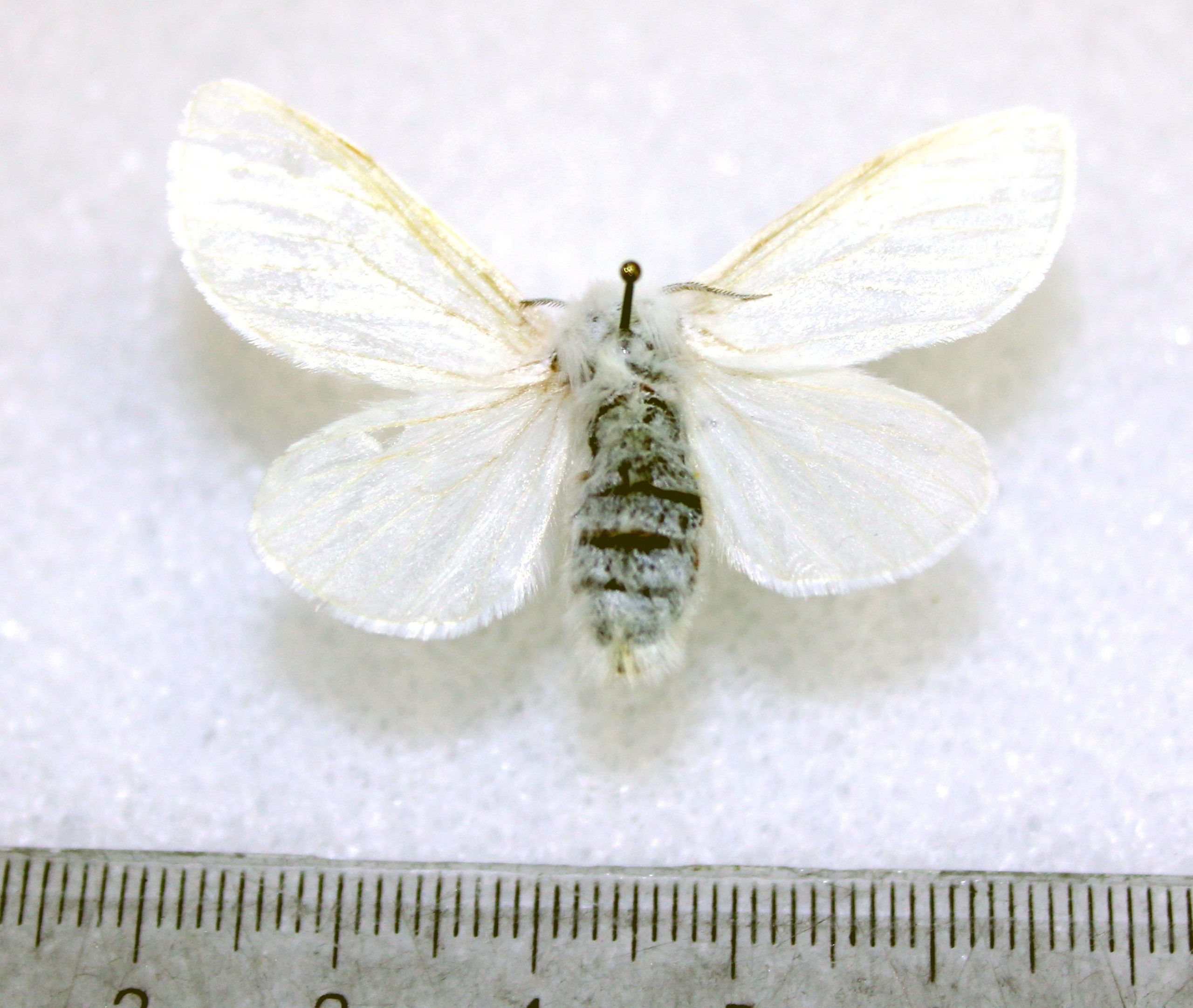

Noctuidae
Noctuidae, the owlet moths and cutworms, are probably the most common Lepidoptera included in student collections, along with Geometridae. There is considerable reclassification ongoing in this family, Erebidae, and several other taxa that we do not cover in this lab. Adult Noctuidae tend to have subtle wing colouration, mostly in shades of brown and grey, but there are exceptions. In comparison with other families you have seen in this lab, note the relatively stout body, narrow forewing, and plain hindwing. When identifying this family in your collection, you should recognize that there are several very similar groups, like the family Notodontidae, and double-check your identification carefully.
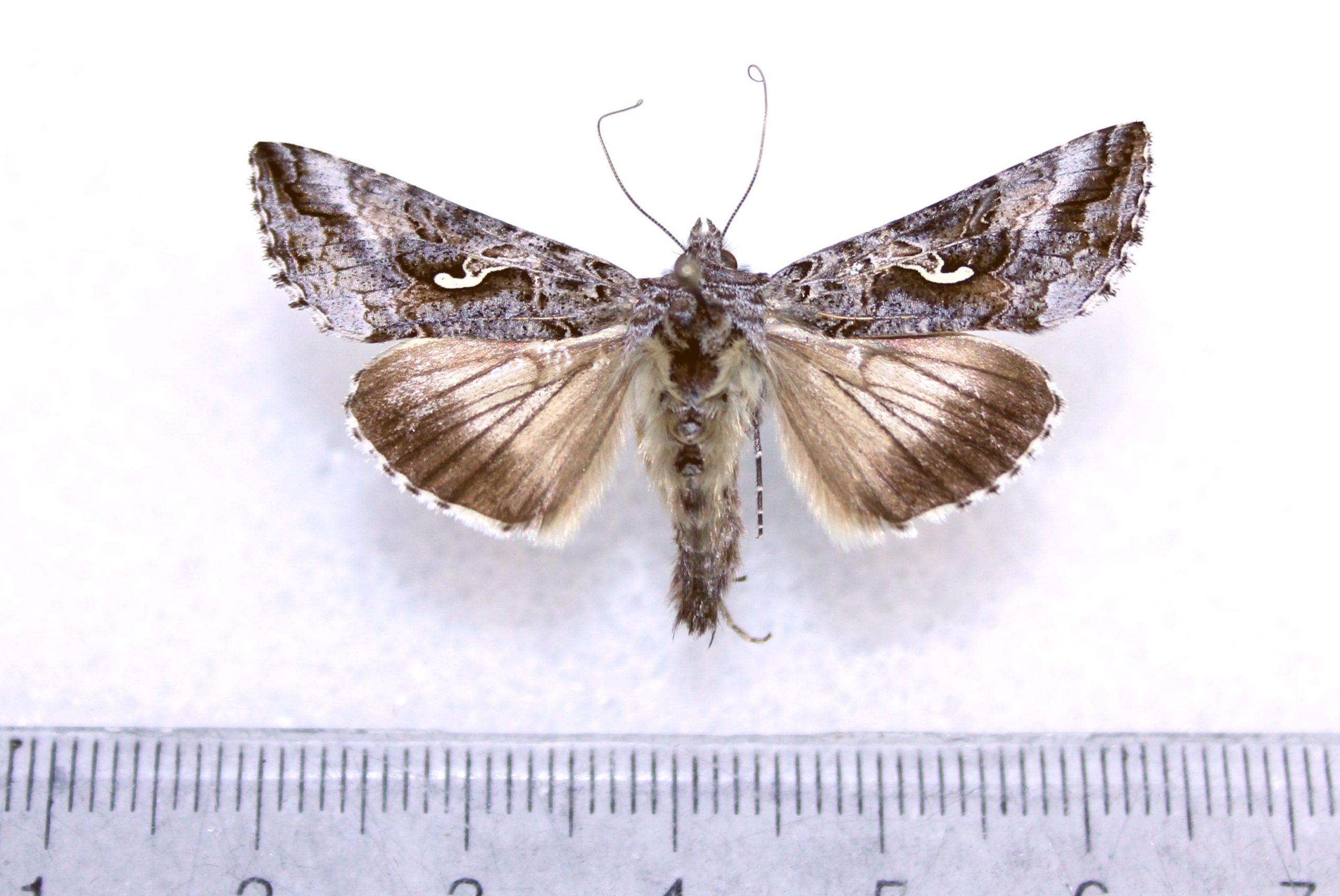
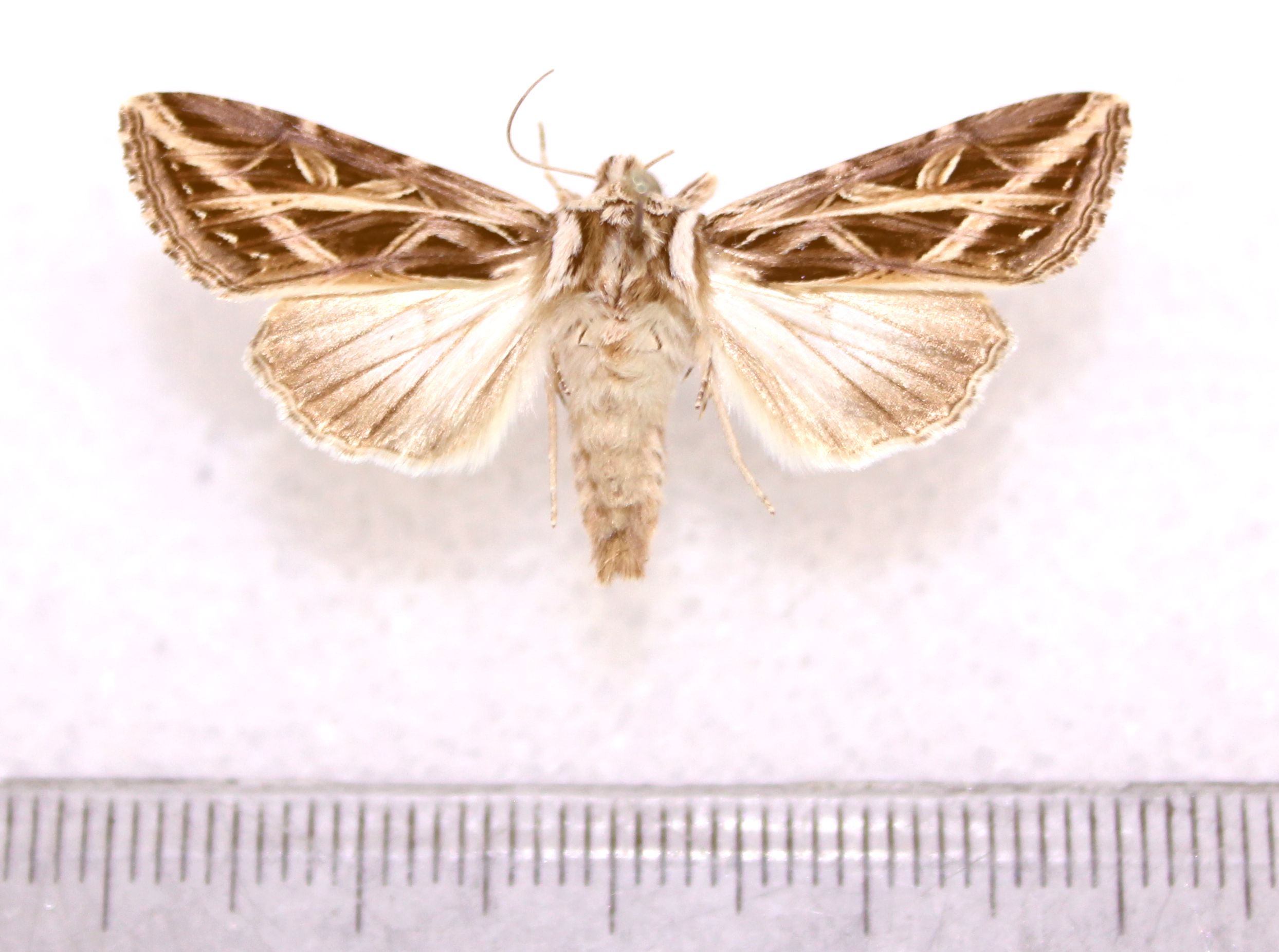
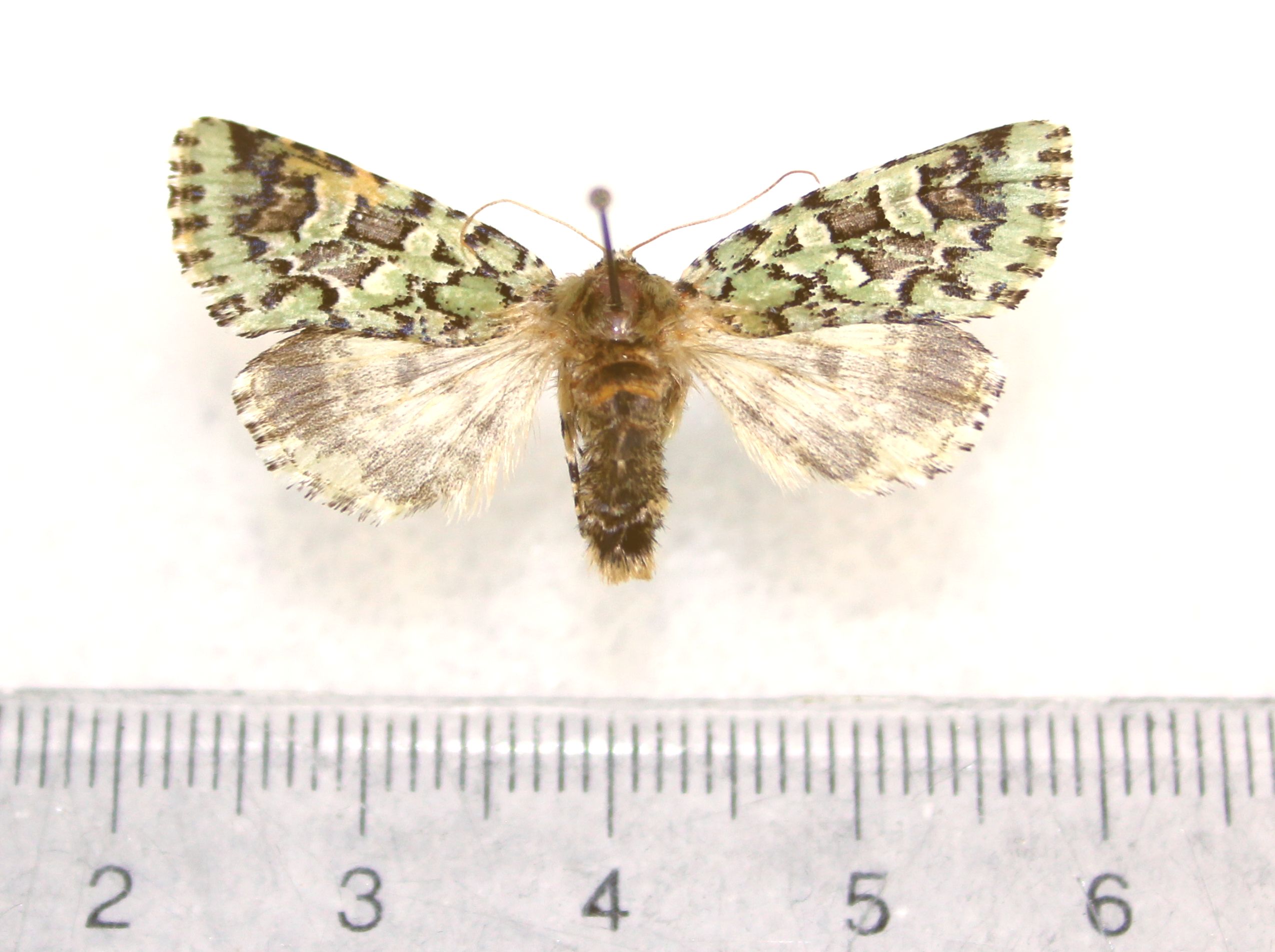
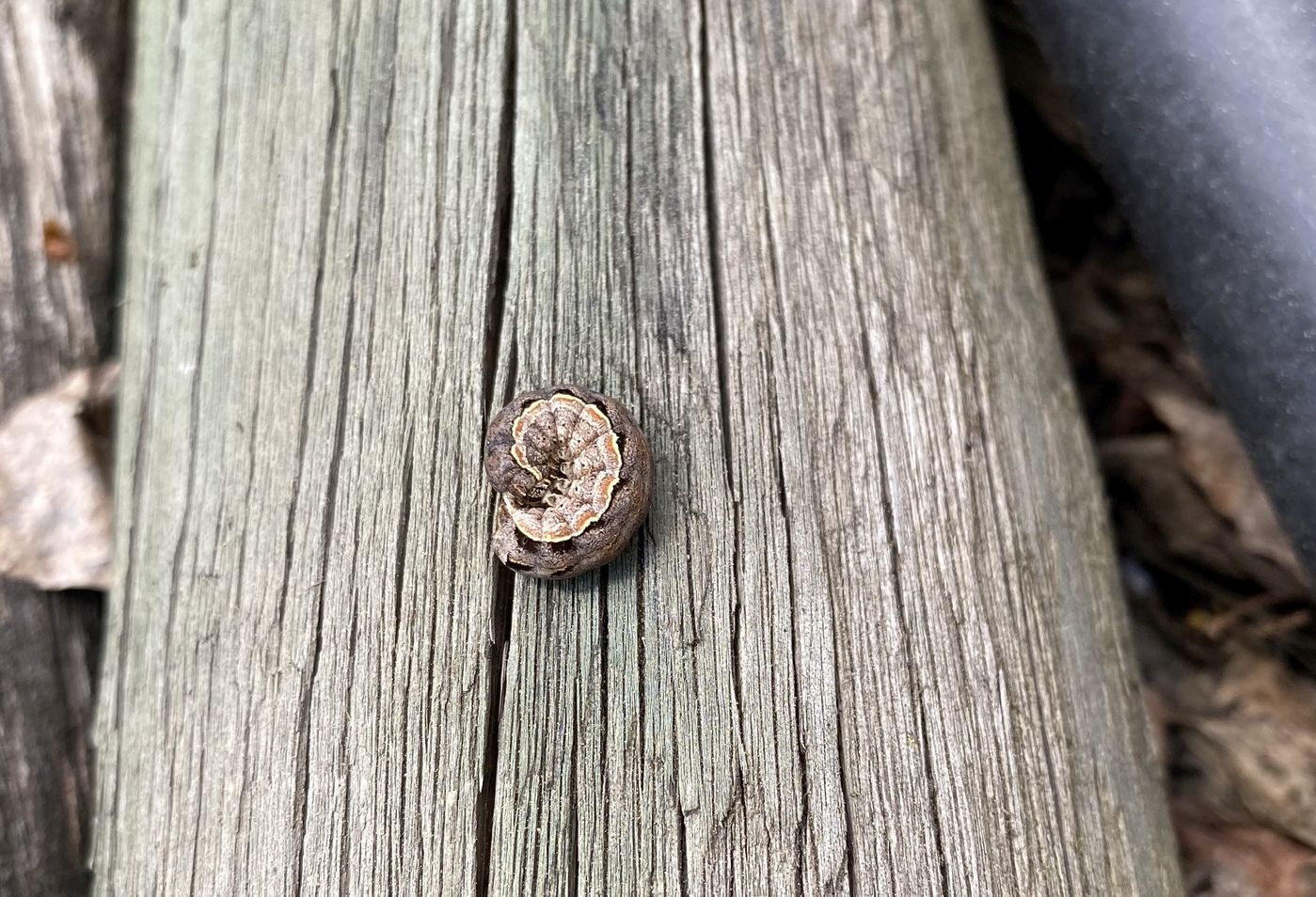


Feedback/Errata